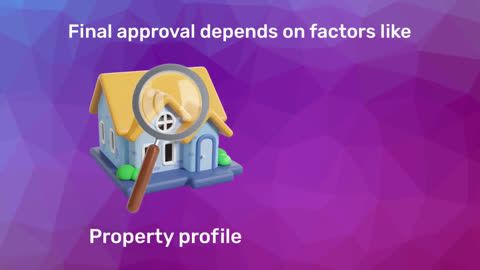The fixed instalment method is a way to repay a loan. You pay the same amount of money every month until the loan is fully paid off. This amount is called an instalment. It includes both the principal (the amount that you borrowed) and the interest (the cost of borrowing the money).
How does it work?
The working of the fixed instalment method is straightforward. When you borrow money or invest, you agree to pay or receive a certain amount regularly. This amount includes the principal amount and the interest (if applicable).Here is a breakdown of how the fixed instalment method works:
1. Principal amount: This is the original amount you borrowed or invested.
2. Interest: The interest is calculated on the principal amount. It could be fixed or variable.
3. Fixed instalments: The total amount that you need to repay or receive is divided into equal instalments over the loan or investment period.
4. Repayment schedule: A fixed schedule is created, and you are expected to pay the same amount periodically, such as monthly, quarterly, or yearly.
Example of fixed instalment method for loans
Suppose you take a home loan of Rs. 5,00,000 at a 10% annual interest rate for 5 years. Using the fixed instalment method, your repayment amount will be divided into equal monthly instalments. This means you pay the same amount every month until the loan is fully repaid.This method provides predictability and stability, making it easier to plan your finances. It is a preferred option for many when dealing with loans like home loans, car loans, or personal loans.
Benefits of fixed instalment method
1. Predictability: You know exactly how much you need to pay each month. This helps you plan your budget better.2. Simplicity: The fixed instalment method is easy to understand. You pay the same amount every month.
3. Stability: Your monthly payment does not change, even if interest rates go up.
Fixed instalment method in home loans
If you are considering a home loan, the fixed instalment method can be beneficial. When you take a home loan, you will be repaying it over a long period, which can go up to 32 years. Having a fixed amount to pay each month ensures that you can plan your finances without surprises.How to calculate fixed instalments?
Calculating fixed instalments is easy if you know the principal amount, interest rate, and repayment period. You can use a formula or an online EMI calculator to get the exact amount.Here is the basic formula for calculating fixed instalments:
EMI = [P x R x (1+R)^N] / [(1+R)^N-1]
Where:
- EMI = equated monthly instalment
- P = principal amount
- R = monthly interest rate
- N = number of instalments
Fixed instalment method vs. other repayment methods
There are several ways to repay loans or receive investment returns. How does the fixed instalment method compare to others?1. Fixed instalment vs. reducing balance method: In the reducing balance method, the interest is calculated on the outstanding principal amount, and the instalment amount changes over time. This is different from the fixed instalment method, where the amount remains constant.
2. Fixed instalment vs. bullet repayment: Bullet repayment involves paying the entire loan amount at once at the end of the term. Fixed instalments are easier to manage, as they spread the payments over the loan period.
3. Fixed instalment vs. floating rate method: Floating rate loans have varying instalments based on interest rate changes. In contrast, fixed instalment loans have the same payment amount every period.
What to consider before choosing the fixed instalment method
While the fixed instalment method has many benefits, it is not suitable for everyone. Consider these points before opting for this method:- Fixed payments: Ensure you have a stable income to make consistent payments.
- Higher initial payments: If interest rates decrease, you could end up paying more than someone with a floating interest rate.
- Long-term commitment: Make sure you are ready to commit to regular payments over a long period.
Key takeaways
- The fixed instalment method is a simple and reliable way to manage loans or investments.
- It involves paying a fixed amount regularly, making it easy to plan your finances.
- It is particularly useful for long-term loans like home loans, providing stability and predictability.
- Before opting for this method, consider your income stability and the commitment required.
Explore Bajaj Housing Finance Home Loan
Are you looking for a home loan provider that offers convenient loan options? Consider Bajaj Housing Finance Home Loan. With low interest rates, high loan amount, and quick approval processes, Bajaj Housing Finance makes home ownership easier.Here are a few benefits of opting for a home loan with us:
1. High loan amount: Get a home loan of up to Rs. 15 Crore* to turn your dream home into reality.
2. Low interest rates: Enjoy interest rates starting from 7.45%* p.a, with EMIs as low as Rs. 684/lakh*.
3. Quick approval: Get approval within 48 Hours* of applying – sometimes even sooner.
4. Long repayment tenure: Repay your loan comfortably with tenure of up to 32 years.
5. No foreclosure fee*: Individual borrowers with a floating rate of interest can prepay or foreclose their loan at no extra charge.
6. Easy application: Benefit from our doorstep document collection service for a hassle-free process.
7. Balance transfer facility: Transfer your existing home loan and get a top-up loan with better terms.
Ready to take the next step toward your dream home? Apply for a Bajaj Housing Finance Home Loan today.




